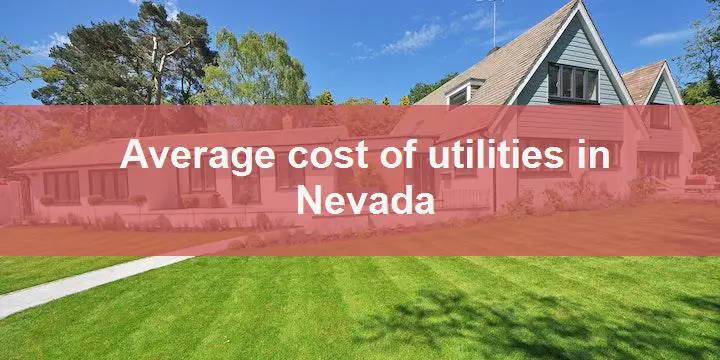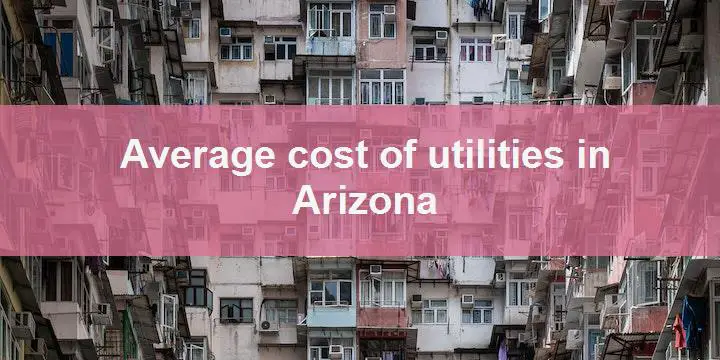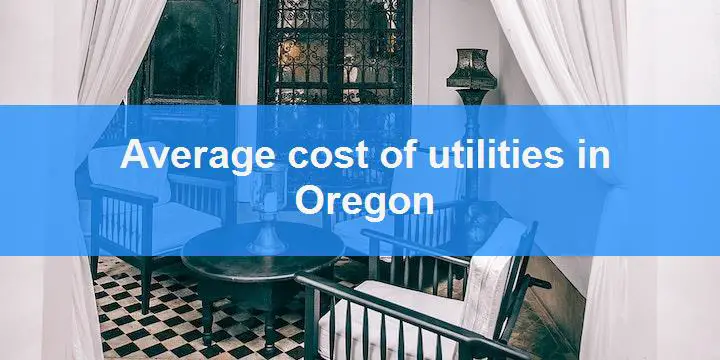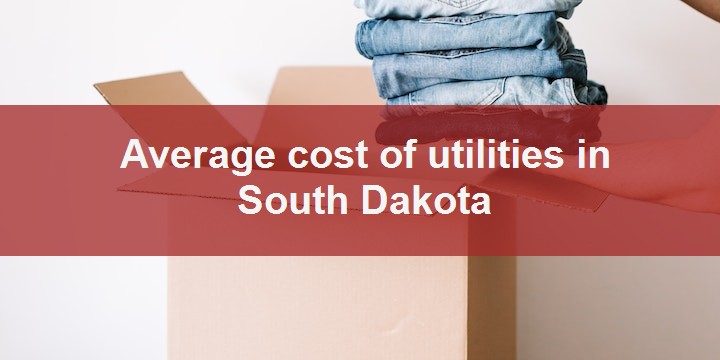When budgeting for household expenses in Nevada, understanding utility costs is key—especially given the state’s diverse climate. In 2025, the average cost of utilities in Nevada is $629.15. With its vast deserts and vibrant cities, Nevada’s unique combination of scorching summers and cooler winters plays a big role in shaping energy consumption. In this guide, we’ll break down utility expenses for different household setups and seasons, giving you a clear picture of what to expect when managing your monthly bills in the Silver State.
Average Electric Bill in Nevada
When it comes to managing household expenses in Nevada, understanding your electric bill is key—especially with the state’s extreme summer heat. In 2025, the average electric bill in Nevada is $155.36, reflecting the impact of scorching summers and mild winters on energy consumption. These seasonal shifts can cause significant fluctuations in electricity usage, especially during peak cooling periods.
The average bill takes into account both winter ($186.83) and summer ($123.89) consumption, providing a comprehensive view of how energy needs change throughout the year.
Nevada vs. Utah: Summer Energy Cost Comparison
Curious about how Nevada’s summer electricity costs stack up against its neighbor? The table below compares energy expenses for a large single-family home with four people in Nevada and Utah. This comparison highlights how climate, household size, and energy efficiency influence electricity costs between the two states.
| Criteria | Nevada | Utah |
|---|---|---|
| Total Consumption (kWh) | 862.12 kWh | |
| Electricity Rate (cents/kWh) | 15.35 ¢/kWh | 11.26 ¢/kWh |
| Estimated Monthly Cost | $132.34 | $97.07 |
| Detailed Cost Breakdown | ||
| Base Usage: 412.12 kWh | $63.26 | $46.40 |
| Refrigerator: 120 kWh | $18.42 | $13.51 |
| Air Conditioner: 240 kWh | $36.84 | $27.02 |
| Clothes Dryer: 90 kWh | $13.82 | $10.13 |
| Nevada estimated monthly cost is higher than Utah by 36.33%. | ||
Historical Trends in Electricity Prices
The chart above tracks historical electricity price trends for large single-family homes in Nevada during the summer. It provides valuable insights into how rates have fluctuated over time, helping homeowners anticipate future changes and make informed decisions about energy consumption.
Electricity Cost Comparison Across Various States
Here is a comprehensive comparison of electricity costs across different states, considering various household types and seasons. This table offers a broad perspective on utility expenses.
| State | People | Household Type | Season | Appliances | Electric Monthly Bill |
|---|---|---|---|---|---|
| New York | 3 | One-bedroom apartment | Summer | Fridge, AC, Dryer |
$148.77 |
| California | 4 | Single-family large | Winter | Heater, Dryer, Fridge |
$407.08 |
| Texas | 3 | Townhouse | Winter | Heater, Dryer, Fridge |
$168.56 |
| Florida | 3 | Single-family small | Summer | Fridge, AC, Washer |
$102.05 |
| Illinois | 3 | Two-bedroom apartment | Summer | Fridge, AC, Washer |
$98.75 |
| Vermont | 2 | Studio | Winter | Heater, Fridge |
$194.60 |
| Nevada | 2 | Townhouse | Summer | Fridge, AC, Washer |
$101.69 |
For a more detailed and personalized utility expense estimate, explore our Electricity Bill Calculator. Adjust the parameters to match your household specifics and get an accurate estimate tailored to your needs.
Average Gas Bill in Nevada
When it comes to managing household expenses in Nevada, understanding your gas bill is essential. In 2025, the average gas bill in Nevada is $217.81, influenced by the state’s desert climate with hot summers and mild winters. While heating costs are generally lower than in colder states, gas usage for water heating, cooking, and even outdoor grilling can still add up throughout the year.
The average bill accounts for seasonal variations, with higher usage in winter ($319.04) and lower consumption during summer ($116.57). This helps provide a clearer picture of what to expect year-round.
Nevada vs. Arizona: A Summer Gas Usage Comparison
Curious about how Nevada’s summer gas costs compare to its neighbor? The table below highlights gas expenses for a large single-family home with four people in Nevada and Arizona. This comparison shows how climate, household size, and energy habits can affect gas consumption and costs between the two states.
Gas Bill Comparison Overview
| Criteria | Nevada | Arizona | Avg. USA |
|---|---|---|---|
| Total Consumption (MCF) | 6.99 MCF | ||
| Gas Rate ($/MCF) | $19.92 | $23.41 | $17.73 |
| Estimated Monthly Cost | $139.29 | $163.68 | $123.97 |
| Appliance Cost Breakdown | |||
| Outdoor Grill | $11.00 | $12.92 | $9.79 |
| Water Heater | $80.64 | $94.76 | $71.77 |
| Gas Stove | $18.33 | $21.54 | $16.31 |
| Gas Oven | $29.32 | $34.46 | $26.10 |
| Nevada's estimated monthly cost is lower than Arizona by 14.90%. | |||
| Nevada's estimated monthly cost is higher than the Avg. USA by 12.36%. | |||
The chart above tracks historical gas price trends for large single-family homes in Nevada during the summer. It provides valuable insights into how gas rates have fluctuated over time, helping homeowners anticipate future changes and make informed decisions about energy consumption.
Gas Cost Comparison Across Various States
Here is a detailed comparison of gas costs across different states, considering various household types and seasons. This table offers a comprehensive view of utility expenses.
| State | People | Household Type | Season | Appliances | Gas Monthly Bill |
|---|---|---|---|---|---|
| New York | 3 | Townhouse | Summer | Water heater, Stove, Oven |
$88.71 |
| Alabama | 2 | Studio | Summer | Water heater, Stove, Oven |
$64.76 |
| California | 4 | Single-family small | Winter | Gas heating, Dryer, Oven |
$265.08 |
| Texas | 3 | Townhouse | Winter | Gas heating, Dryer, Oven |
$279.14 |
| Illinois | 3 | Single-family small | Summer | Water heater, Stove, Oven |
$79.83 |
| Georgia | 4 | Single-family large | Summer | Water heater, Stove, Oven |
$172.91 |
| Oklahoma | 2 | Studio | Winter | Gas heating, Dryer, Oven |
$170.61 |
For a more detailed and personalized utility expense estimate, check out our Gas Bill Calculator. Customize the parameters to match your household specifics and get an accurate estimate tailored to your needs.
Average Water and Sewer Bill in Nevada
Thinking about moving to or investing in Nevada? Understanding utility costs—especially water and sewer fees—is key to effective budgeting. In 2025, the average water and sewer bill in Nevada is $46.00, an important factor that can significantly impact your monthly expenses.
State-by-State Comparison
To put Nevada’s water and sewer costs into perspective, here’s how they compare with 11 other states:
| State | Average Water and Sewer Fees |
|---|---|
| Arizona | $64.00 |
| California | $77.00 |
| Utah | $58.00 |
| Colorado | $39.00 |
| Oregon | $76.00 |
| Washington | $75.00 |
| Idaho | $48.00 |
| New Mexico | $62.00 |
| Texas | $57.00 |
| Montana | $58.00 |
| Wyoming | $73.00 |
When compared to states like California and Washington, Nevada’s water and sewer fees are relatively competitive, offering more affordable options while maintaining reliable services.
Innovative Water Management in a Desert State
Nevada’s arid climate requires creative solutions for sustainable water management. Here are some of the strategies that help conserve water:
- Desert Landscaping (Xeriscaping): Using drought-tolerant plants to minimize outdoor water use.
- Efficient Irrigation: Implementing drip irrigation systems that reduce water waste while keeping landscapes healthy.
- Water Recycling: Utilizing greywater systems to repurpose household water for irrigation purposes.
- Aquifer Recharge Projects: Supporting initiatives that replenish underground water supplies to secure long-term sustainability.
Local Incentives and Programs
Nevada actively promotes water conservation through various programs and incentives designed to encourage sustainable practices:
- Rebates for Water-Efficient Appliances: Take advantage of rebates for installing low-flow fixtures, efficient toilets, and other water-saving devices.
- Community Education Initiatives: Participate in workshops and programs that teach effective water conservation techniques.
- Innovation Grants: Apply for funding that supports cutting-edge research in water management and conservation technologies.
Commitment to Sustainability
Nevada’s dedication to sustainable water management not only protects its natural resources but also ensures clean, safe water for current and future residents. This focus on environmental stewardship enhances the state’s appeal for both homeowners and investors.
Conclusion
Nevada’s competitive water and sewer costs, combined with forward-thinking water management strategies, make it an attractive destination for those seeking both affordability and sustainability. Our team is here to provide expert guidance and resources to help you make informed real estate decisions. Choosing Nevada means investing in a state that values economic efficiency and environmental responsibility.
Garbage/Trash Removal Costs in Nevada
When managing household expenses in Nevada, it’s essential to account for waste management services. In 2025, the average cost for garbage and trash removal in Nevada is around $29.00. This cost can vary depending on factors such as service frequency, bin sizes, and whether recycling services are included in the plan.
In urban areas like Las Vegas, waste management systems are highly efficient, featuring robust recycling programs and frequent pick-ups. While these services can slightly elevate costs, they ensure comprehensive waste management that supports both convenience and environmental sustainability.
Garbage/Trash Removal Costs Comparison Across States
To give you a clearer picture, here’s how Nevada’s average garbage/trash removal costs compare with those of neighboring states:
- Arizona: $25.00
- Utah: $24.00
- Colorado: $28.00
- New Mexico: $25.00
- Oregon: $30.00
Compared to nearby states, Nevada’s garbage removal costs are relatively moderate. While states like Arizona and Utah might have slightly lower costs due to different service structures, Nevada’s pricing reflects its comprehensive waste management systems, especially in densely populated urban regions.
Understanding these costs can help you plan your household budget more effectively. For more tailored insights, try using our utility expense calculator to estimate your specific waste management expenses based on location and service preferences.
Internet and Cable TV Expenses in Nevada
When planning your household budget in Nevada, it’s important to factor in the costs of internet and cable TV services. In 2025, the average internet and cable TV expenses in Nevada are around $116.32, though actual costs can vary depending on the provider, plan, and specific location.
Nevada offers a wide range of service providers, giving residents the flexibility to choose plans that fit their needs. This competitive environment helps keep prices reasonable while ensuring reliable, high-speed connections and diverse entertainment options.
Breakdown of Internet and Cable TV Prices by Provider in Nevada
| Provider | Internet Price | Cable TV Price | Bundle Price |
|---|---|---|---|
| Comcast | $62.99 | $73.99 | $117.99 |
| Verizon | $63.99 | $74.99 | $123.99 |
| AT&T | $57.99 | $68.99 | $106.99 |
This table provides an overview of pricing from major providers, helping you compare options and find the best plan based on your budget and usage needs.
How Nevada’s Internet and Cable TV Costs Compare to Other States
To give you a broader perspective, here’s how Nevada’s average internet and cable TV costs stack up against neighboring states:
- California: $116.32
- Arizona: $112.66
- Utah: $113.66
- Oregon: $116.32
- Idaho: $112.66
- Colorado: $113.66
- Washington: $116.32
- Texas: $114.66
Compared to neighboring states like California and Arizona, Nevada’s internet and cable TV costs are relatively competitive. However, it’s always wise to explore different providers to find the best deals tailored to your specific needs.
To get the most value from your internet and cable TV services, we recommend regularly reviewing your plan and comparing packages from different providers. This helps you find the perfect balance between cost and service quality. 🌐📺
Home Phone and Mobile Phone Costs in Nevada
When budgeting for utilities in Nevada, it’s important to consider the costs of home phone and mobile phone services. In 2025, the average home phone and mobile phone costs in Nevada are around 64.66, though actual expenses can vary based on your provider, plan, and location.
Nevada offers a wide range of service providers, giving residents multiple options to choose from. This competition helps keep prices competitive while ensuring access to reliable networks and quality service.
Home and Mobile Phone Costs by Provider in Nevada
| Provider | Mobile Phone Price | Home Phone Price |
|---|---|---|
| Verizon | $69.99 | $36.99 |
| AT&T | $64.99 | $31.99 |
| T-Mobile | $58.99 | Doesn’t provide |
This table provides an overview of pricing from popular providers, helping you compare plans and choose the best option based on your budget and communication needs.
How Nevada’s Phone Costs Compare to Other States
To give you a broader perspective, here’s how Nevada’s average home phone and mobile phone costs stack up against neighboring states:
- California: 66.66
- Arizona: 64.66
- Utah: 65.66
- Oregon: 68.32
- Idaho: 68.32
- Colorado: 63.66
- Washington: 68.32
- Texas: 64.66
Compared to neighboring states like California and Arizona, Nevada’s phone costs are relatively competitive. This makes it worthwhile to explore different providers and packages to find the best deal tailored to your specific needs.
To get the most value from your home and mobile phone services, we recommend regularly comparing plans from different providers. This helps you balance cost with service quality, ensuring you’re not overpaying for features you don’t need. 📞📱
Conclusion
Staying informed and regularly reviewing available phone plans is key to managing your expenses effectively. We update this article every month with the latest rates and information to help you make the best decisions. Be sure to check back regularly for the most up-to-date insights on phone service costs in Nevada. 🌟
FAQ
Q: 💡 What is the average monthly electric bill in Nevada in 2025?
A: The average monthly electric bill for Nevadans in 2025 is approximately $155.36.
Q: 🔥 What is the average monthly gas bill for Nevadans in 2025?
A: The average monthly gas bill for Nevadans in 2025 stands at approximately $217.81.
Q: 🚰 What is the average monthly water and sewer bill in Nevada in 2025?
A: The average monthly water and sewer bill in Nevada in 2025 is around $46.00.
Q: 🗑️ What is the average monthly garbage and trash removal cost in Nevada in 2025?
A: The average monthly garbage and trash removal cost in Nevada in 2025 is about $29.00.
Q: 📡 What is the average monthly internet and cable TV bill in Nevada in 2025?
A: The average monthly internet and cable TV bill in Nevada in 2025 is approximately $116.32.
Q: 📱 What is the average monthly home and mobile phone bill in Nevada in 2025?
A: The average monthly home and mobile phone bill in Nevada in 2025 is around 64.66.
Q: 🧾 What is the total average monthly cost of utilities in Nevada in 2025?
A: The total average monthly cost of utilities in Nevada in 2025 is approximately $629.15.



